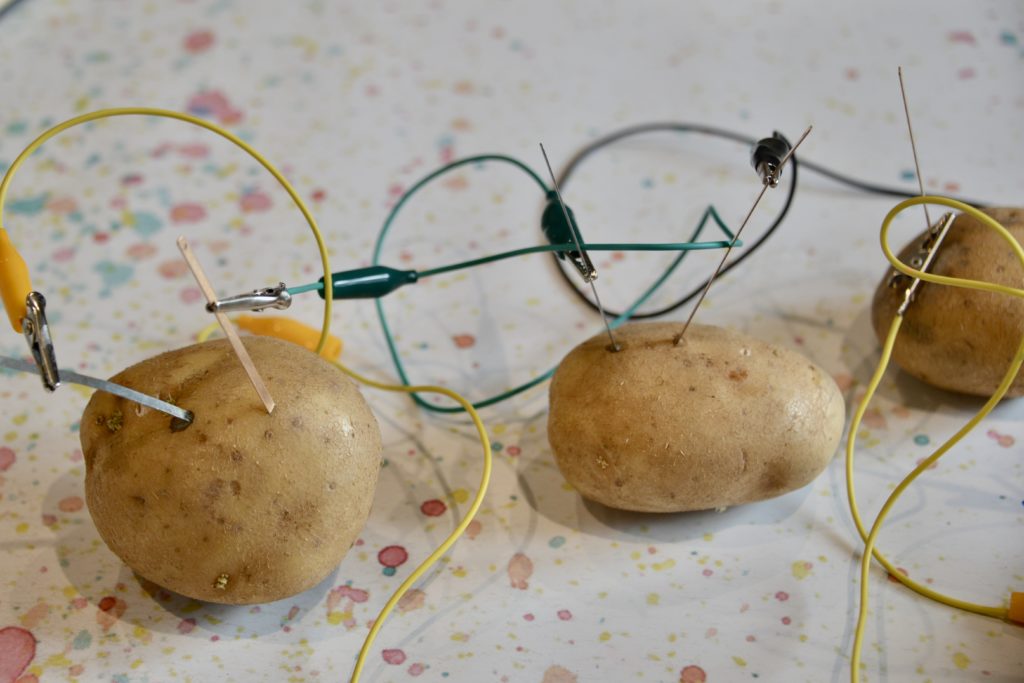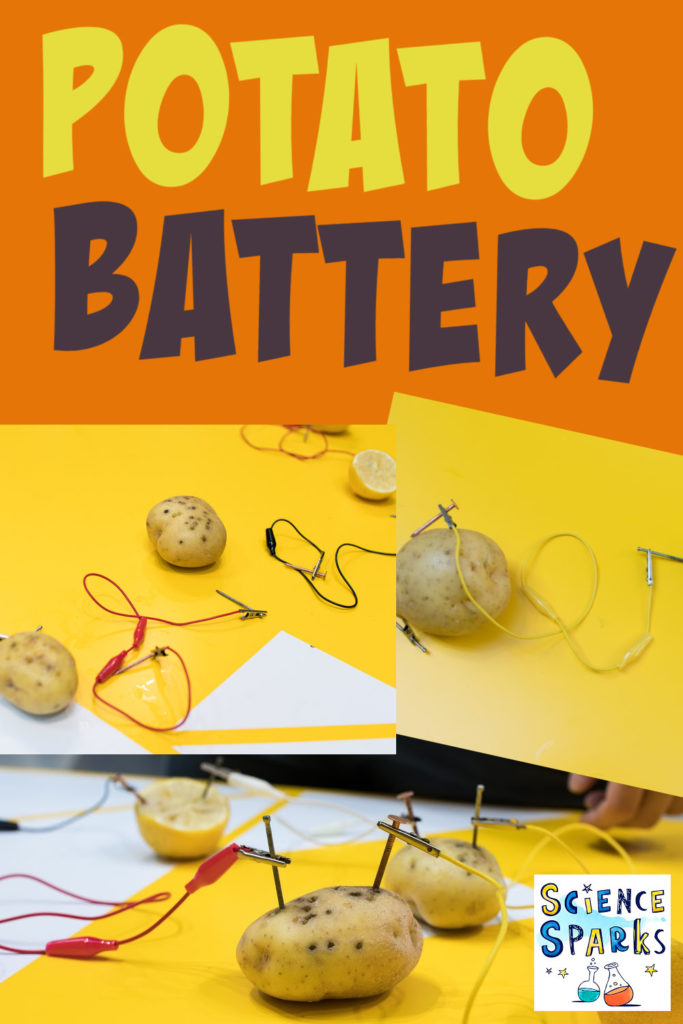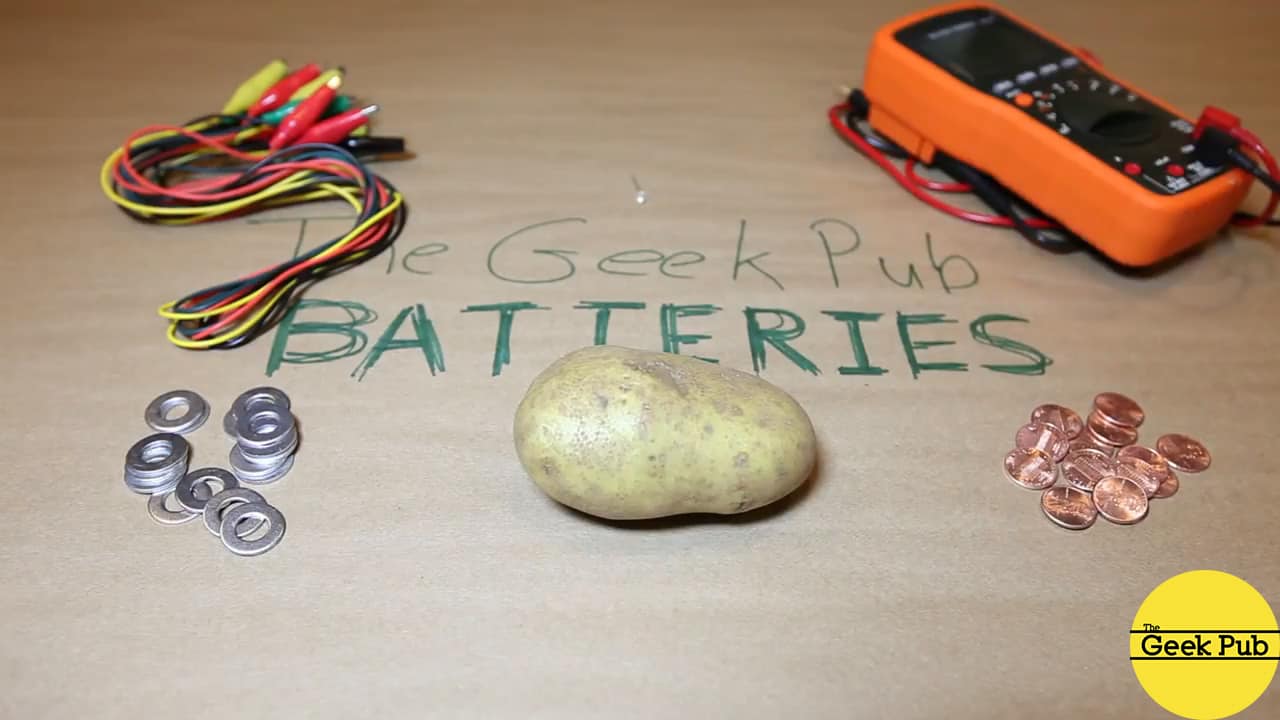A potato battery is a type of battery that uses a potato as one of its components. It is a simple and easy-to-make science experiment that can be done at home or in the classroom to demonstrate the principles of electricity and how a battery works.
To make a potato battery, you will need a potato, a copper penny, a zinc-coated nail, and a small light bulb or a digital clock. You will also need a small piece of insulated wire, such as a stranded copper wire or a copper wire with an insulation coating.
To begin, insert the copper penny and the zinc-coated nail into the potato, about an inch apart. Make sure that the penny is on one end of the potato and the nail is on the other end. The penny will act as the positive terminal, or cathode, of the battery, while the nail will act as the negative terminal, or anode.
Next, connect one end of the insulated wire to the copper penny and the other end to the light bulb or digital clock. Then, connect the other end of the light bulb or digital clock to the zinc-coated nail. The light bulb should light up, or the digital clock should start running.
The potato battery works because the copper penny and the zinc-coated nail are made of different metals. When they are inserted into the potato, they create a chemical reaction called an electrochemical cell. This reaction generates a small electrical current, which flows through the insulated wire and powers the light bulb or digital clock.
The potato acts as an electrolyte in the battery, allowing ions to flow between the penny and the nail. The potato's high water content and its naturally occurring chemical compounds make it an ideal electrolyte for this type of battery.
Potato batteries are a fun and educational way to learn about electricity and how batteries work. They can be used to power small electronic devices, such as digital clocks or small light bulbs, and can be used to demonstrate the principles of electricity in a science class or as a science fair project.
While potato batteries are a simple and effective way to generate a small amount of electricity, they are not a practical source of power for everyday use. They have a low voltage output and can only power small electronic devices for a short period of time. However, they are a great way to learn about electricity and how batteries work, and can be a fun and educational activity for kids and adults alike.








